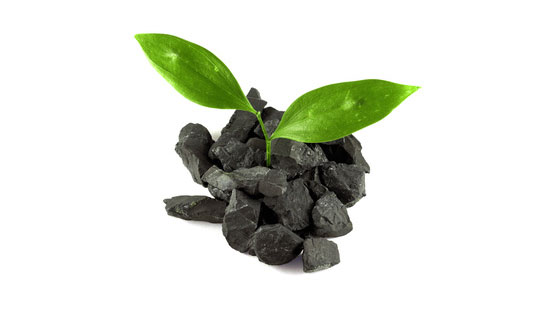

Landscape Gardening Courses - Learn From The Professionals
If you want to know more about landscaping, you know that learning all by yourself through a how-to book on landscaping would not be enough. Although there are a lot of good books that you can choose from, nothing beats the learning experience under a formal learning on landscaping.
There are actually a number of college level courses on landscape gardening that you might want to take. Degree programs may very on the specific approaches, teachers, and schools but all of those will basically let you learn landscape gardening in theory and practice. There are lectures in the usual classroom settings while hand on and practical application will also be provided by going on horticultural fields.
The degree programs related with landscape gardening are basically aimed to gear the future graduates toward employment opportunities related to horticulture with emphasis on the maintenance and development of the landscapes for both residential and commercial purposes. Included in the programs related with landscape gardening are: a general certificate, an associate’s degree, a certificate in maintenance and installation, and a certificate in production.
The most common courses on landscape gardening put emphasis on nursery and greenhouse culture, turf management, plant identification, arboriculture, and the planning, construction, and maintenance of landscapes. Some of the courses also include garden design, practical woodwork, plant science, soil science, and communications and word processing. There are programs which require its graduate students to take a pesticide applicator’s examination.
Meanwhile, if you are seeking for a degree way beyond the usual college diploma, there are universities which offer formal courses in landscape architecture where you can earn a Bachelor’s degree. Graduate students may also opt to take the Graduate Diploma in the said field.
Landscape gardening courses are practically designed for both professionals and hobbyists. Night courses are also offered under the continuing education programs. Individuals who choose to apply for university or college courses under landscape gardening are those who have the proficiency and interest in the field of botany and horticulture.
Meanwhile, for students who want to undergo a home study, online courses could also be availed. The materials are often packaged in a CD. These courses usually provide illustration and text and will provide a certificate after the completion toward the written exam. Unfortunately, if you are really interested in pursuing landscaping as a career, a formal education is recommended.
A number of employment opportunities are available for people who are graduates of formal institutions in the field of landscape gardening. These graduates are not employed as mere gardeners but may also be hired in institutions like hospitals and golf courses. They are usually tasked to maintain and design the outdoor and indoor gardens of industrial parks, universities, municipal buildings, and even shopping malls. The demand is actually too vast to enumerate.


Landscape Materials Education
As an addition to our service we share this information with clients who wish to learn about our products and landscape techniques. Many garden owners want to know what is topsoil made of? We are constantly trying to post more information and answers to most common questions. So please check with us often.
Lawn Care
Turf / Sod
STARTING A NEW LAWN
When starting a new lawn, there are two zones of soil: topsoil and subsoil. Topsoil is soil from the surface down about 8 to 12 inches where grass roots grow.
Subsoil is below the root zone.
Start planning with the subsoil. The most important trait of the subsoil is good drainage. Generally existing subsoil at a site can be used, but where options are available, a sandy soil is best. Be sure to loosen and grade subsoil before applying topsoil.
*Never roll or pack subsoil: its grade should parallel the finished surface grade.Good topsoil is difficult to find. At construction sites, existing topsoil should be saved during the construction process, then returned in a uniform layer over the subsoil. If the existing topsoil contains too much clay or is too sandy, adding 1 to 2 inches of fibrous peat, then tilling to a depth of 4 to 6 inches will help in establishing and maintaining the turf. The peat helps open a tight clay soil so that water and air can flow into the soil more rapidly. Peat also adds water-holding capacity to a droughty, sandy soil.
When applying topsoil, first mix about 2 inches of it with the subsoil. Then apply remaining topsoil to a minimum depth of 4 inches (preferably 6 to 8 inches). Soil sold as "black dirt" is generally not suitable as topsoil because it compacts too easily, often hampering water flow into the soil.
The finished grade should drop at least 1 foot in 100 feet away from the house or in the direction of desired surface water flow so that any surface runoff will flow away from the house. Follow grading with a light rolling to eliminate humps and hollows. Correct surface irregularities by raking or dragging a 10-foot long, 2-inch by 10-inch plank across the soil surface. A piece of chain link fence drawn across the finished surface makes a nice seedbed for grasses.
Before seeding have the topsoil tested for nutrient status and pH. Information and instructions on soil testing as well as the actual test can be arranged through the local county extension service. The soil test report includes information about the soil's pH, organic matter, phosphorus, and potassium. It also includes recommendations on how to correct any deficiencies.
What is topsoil made of?
Before talking about topsoil let us understand the soil structure.
The soil can be divided in layers. Each layer can be identified by color and the presence of stones. These layers are: litter, topsoil, subsoil, and bedrock.
- Litter: Made up mostly of, mostly or partially decomposed leaves or grasses.
- Topsoil: Made up or small particles of rock. Mixed with decaying plant and animal matter, also known as humus.
- Subsoil: A layer that usually contains more stones, mixed with only small amounts of organic matter.
- Bedrock: A layer of rock that lies beneath the soil, which marks the end of the soil.
To see how much topsoil you need for your garden please use our topsoil calculator.
